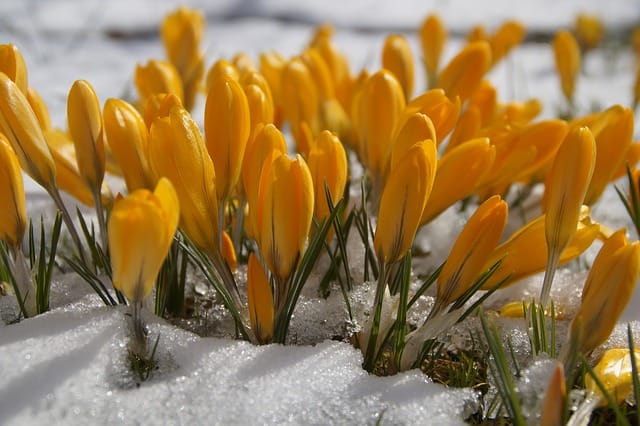Protect Your Aome Against Rapid Snow-Melt

what might happen when you get it? It’s a bit like that with snow-melt
(unless you’re a snowmobiler!)
The melt heralds the coming precious, warmer days of spring and summer. But
the faster it happens, the more it risks damage to our homes.
This year, temperatures in New Brunswick are expected to be a couple of
degrees above average. Rainfall might also be heavier in April and May.
Together these could mean a powerful melt sooner than expected.
Just a few inches of snow can quickly turn into hundreds or even thousands
of gallons of water around your home.
How Can I Protect My Home from Snow-melt Problems?
So, what can you do to reduce the risk of damage to your home during this
much-awaited change in our climate and environment? Here’s a brief rundown
of ideas:
Tune in to weather forecasts so you can time your clearing activities
before any serious melt starts but after recent snow accumulations.- Clear away as much snow as you can from the perimeter of your home,
including any drifts. Remove it from the roof, basement window wells and
stairwells, and around foundations. Don’t pile snow in a position where a
melt will cause the very problems you’re trying to avoid! - Take extra care with roof and ladder work. Surfaces will be slippery. Use
a snow rake to remove roof snow, with your feet remaining firmly on the
ladder if possible. If you’re not confident about doing this, bring in a
contractor to do the job. - While you’re atop your ladder, ensure gutters, eavestroughs and
downspouts are clear of blockages. Otherwise, the melt will overflow the
gutters and, if it refreezes, cause ice dams and dangerous icicles. - Check tree overhangs. As snow on branches begins to melt, the additional
weight and movement may stress them, causing them to snap and damage roofs.
Remove the branches if you can or get a contractor to do it. - Ensure grading slopes away from the house. If decks and driveways slope
down towards the house make sure they’re cleared. Use sand bags, grading
soil or other damming products to prevent fresh melt flowing back towards
the house. - Fit an extension to your downspout so any subsequent melt is drained well
away from the house. These extensions should add at least a couple of
meters or more away from the building. - Check backflow prevention valves, ensuring they’re fully operational.
Clear the storm sewer, catch basin and other drainage areas. - In the basement, look for ground water inundation regularly and check
normal operation of your sump pump, ensuring the discharge pipe is clear. - Also, in the basement, remove expensive and valuable items — or, at the
very least, have them well clear of the floor. Raising appliances off the
floor might also be a wise move if you’re in a potentially vulnerable area. - As foundations are the most vulnerable part of the house to snow-melt,
regularly check them for mold, leaks, cracks, bowing and heaving. The
sooner you spot any potential problems, the less it will cost to put them
right. - Try to keep your attic or roof void fairly cool. Excess heat will speed
up the melt but as it flows down towards the gutters it may refreeze.
As an interesting aside, flood forecasters in New Brunswick announced
recently a new technology to track snow loads and ice movement, hoping
that, by gathering extra data, less damage will be caused from snow and
ice-melt. As they say, watch this space!
Just in Case… Am I Insured Against Snow-melt Damage?
Despite your best efforts, it’s always possible that your home might
sustain some damage from the melt. In which case, you should make sure
you’re fully protected with insurance.
For most property and homeowners insurance, sewer backup is available. In addition, with the recent introduction of
overland water insurance
in Canada, we can go much further in protecting you against water inundation
from, for example, heavy rains and burst river banks.
Please speak to Pearson Insurance to make sure you’re properly protected. Call us today 506-432-1550!
If you do suffer from inundation or snow-melt and you’re insured, speak to
your insurance broker as soon as possible. Don’t throw away anything that’s
been affected and take plenty of photos as proof of damage.

 Tune in to weather forecasts so you can time your clearing activities
Tune in to weather forecasts so you can time your clearing activities